The movie, Big Miracle, and what I witnessed in real life, part 3: Decision must be made - try to rescue the whales or put an end to their suffering; making them more comfortable
 Wednesday, February 8, 2012 at 12:22AM
Wednesday, February 8, 2012 at 12:22AM "When you see an animal that is trapped, you want to help it. There are basically two ways to help an animal in trouble. If you can take care of its problem, you do. If you can't, then you kill the animal and end its suffering."
The words above, spoken by biologist Craig George of the North Slope Borough Wildlife Management Department, pretty well summarize what the debate in Barrow was about. In the movie, Big Miracle, once they learned the gray whales were trapped, the Iñupiat hunters immediately wanted to kill them for food. The movie Malik seemed to feel this way, too, until he came to recognize that such a killing would be caught by the news cameras of the world, and the world would grow angry. Whereas if his people set out to rescue the whales, their efforts would generate good will in the world.
As previously noted, the Iñupiat of Barrow and the Arctic Slope had traditionally seldom hunted gray whales, for the reasons explained. If they could, the people, for the most part, wanted to help the whales. While they would not necessarily turn away from accepting a gift from nature, to kill the whales for food could have proved problematic. First, they had a bowhead quota, but no gray whale quota. Second, if they were to put a harpoon and bomb into one of the whales by normal hunting methods, that whale would almost certainly dive under the ice and disappear.
The action would almost certainly panic the other two whales and they would likely not have just stayed put waiting to be harpooned themselves..
The feeling as I ascertained it from talking to a number of different whalers was that if it were possible to rescue the whales that would be the first priority. If it were not, then they would turn their attention to solving the problems involved to carry out euthanasia.
National and international treaty law being what it is, the federal government, through the National Oceanic and Atmospheric Admisitration, would have to approve such action and it might well have to be rationialized through the International Whaling Commission as well.
In the evening, a meeting of the Barrow Whaling Captains would take place under the direction of Arnold Brower Sr., captain of the ABC crew. Whalers would discuss the issue and then decide what they felt the best course of action would be. To help them make their decision, Brower's son, Arnold Jr., was coming out, along with NSB Wildlife biologists Craig George and Geoff Carroll, and Ron Morris of NOAA, who the feds had sent to check out the situation and to wield federal authority in the oversight of whatever would happen.
As of yet, no national media had reached Barrow, but NBC was already on a north-bound jet and the other major news networks would be following quickly behind. By the time the meeting began, NBC would be in Barrow.
I wanted to reach the whales before the group arrived so I could take a few pictures of them with no people around. I snowmachined out as fast as I could. I managed to get in a little bit of solitary time with the whales, but not much. The whales continued to move back and forth between their two holes, doing their best to keep both open by continually disturbing the water before it could freeze over.
Here he is: Arnold Brower, Jr. He had just spent a bit of time examing the whales and then had turned to walk away. Then he heard the blow of a whale behind him and turned to look.
Geoff had brought a small chain saw out. They also had ropes and hooks and a rake and so set out to make the holes a little larger, to give the whales a little more breathing space... literally. That's Arnold Jr. to the left, of course, then Ron Morris, Geoff Carroll, Craig George and Geoff's Iñupiaq wife, Marie Carroll, who worked with the North Slope Borough Public Information Division and would be hosting some locally produced TV broadcasts to inform people about what was happening and then Jens Brower.
I am certain I know the two people to the far right, but from this picture I cannot tell.
They set out to enlarge the holes.
Geoff reaches out to touch a whale, but it jerks its snout down into the water.
He tries again. The whale remains.
NOAA's Ron Morris touches a whale.
Geoff puts his chainsaw into action and begins to make the hole bigger.
As Geoff pries at chunk of ice he has just cut off, Arnold Jr., Craig and Morris pull.
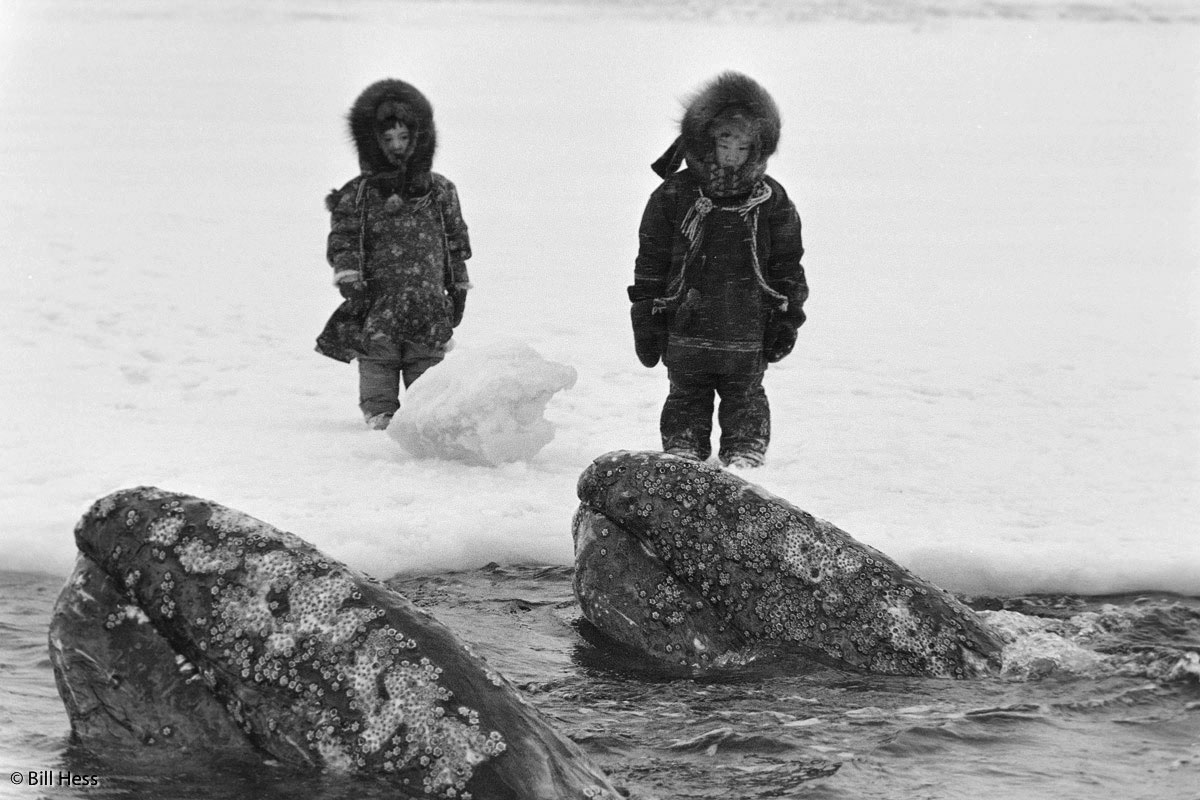
Two children who had come with the group watch the whales. Sharene Ahmaogak and Eben Brower observe the whales..
To some, this may seem incongrous, but it doesn't matter how cold the weather gets - if one is bundled up and is doing hard, physical work, one gets hot and works up a sweat. So Geoff cools down and rehydrates himself with a Coke. In the Arctic, the common way to carry Coke, Pepsi and other drink and food products that one does not want to freeze is in an ice chest.
Geoff had earlier contacted the US Coast Guard to see if they might have some kind of ice-breaking ship nearby that could come in to help set the whales free, but they didn't. The only ice breakers anywhere near Alaska were Soviet. The US and the Soviets were engaged in a cold war - although a slow thaw had begun.
Geoff, by the way, once traveled to the North Pole as a member of a dog team expedition.
Marie will return to Barrow by snowmachine ahead of her husband. Before she leaves, he hands her a slug-loaded shotgun in case she should encounter a hostile polar bear. The end of the barrel is taped to prevent it from becoming plugged by snow.
Tomorrow: the Barrow Whaling Captains meet; rapidly freezing ice overpowers the efforts of whales and humans to keep the holes open - two Minnesotans come with a bubbler.
p>
Complete series index:
Part 2: Roy finds the whales; Malik
Part 5: To rescue or euthanize
Part 6: Governor Cowper, ice punch, chainsaw holes
Part 7: Malik provides caribou for dinner
Part 8: CNN learns home is sacred place
Part 9: World's largest jet; Screw Tractor
Part 11: Portrait: Billy Adams and Malik
Part 12: Onboard Soviet icebreakers


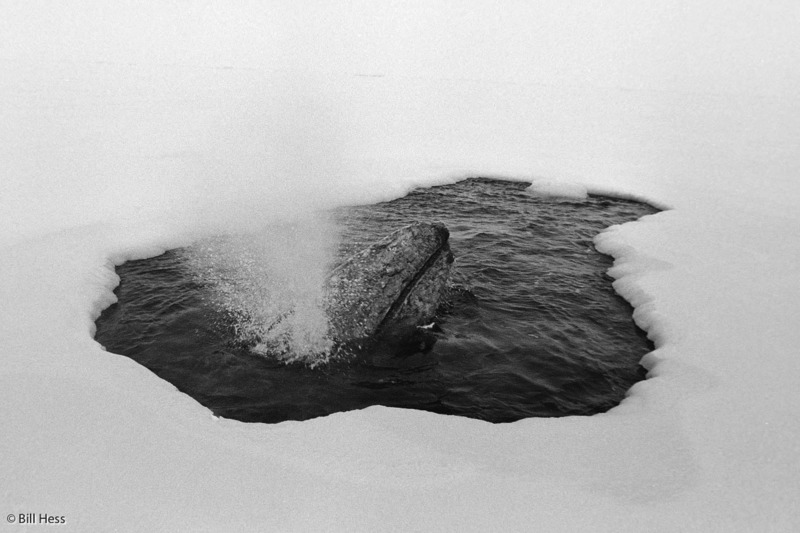
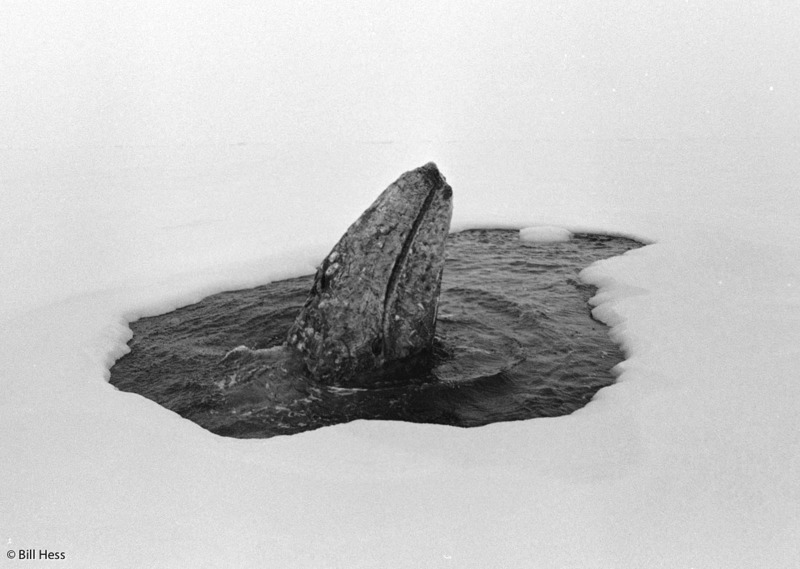
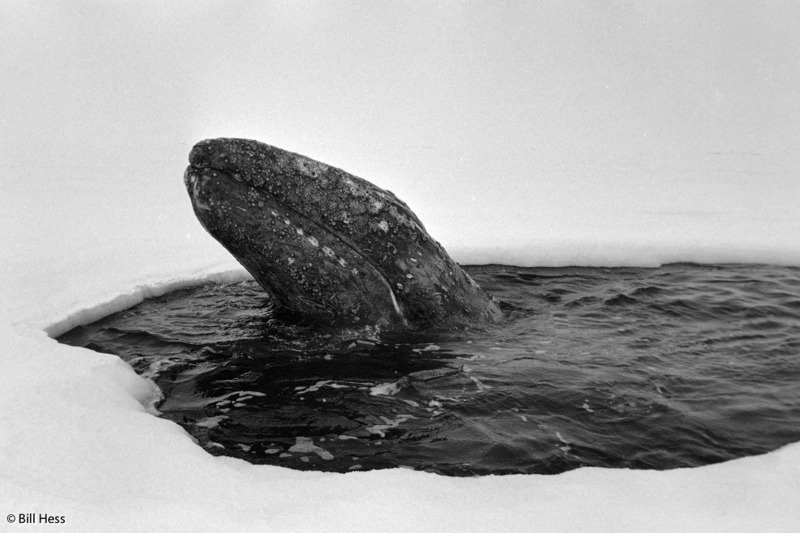

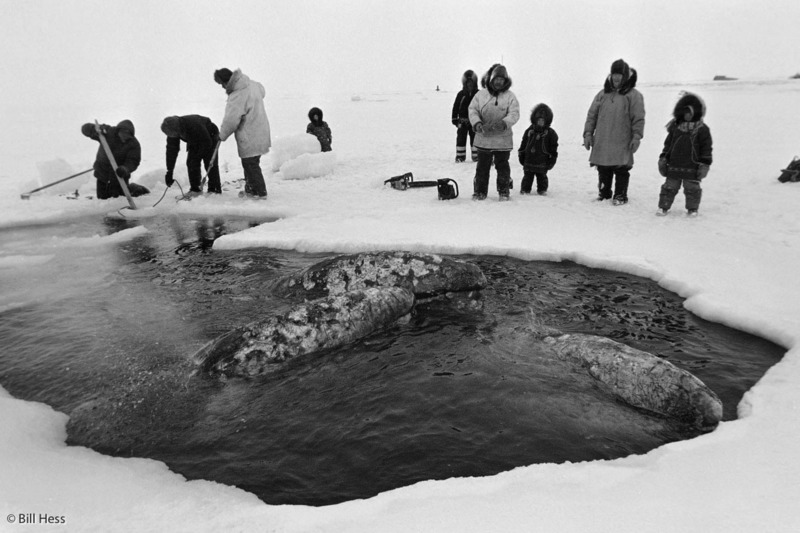
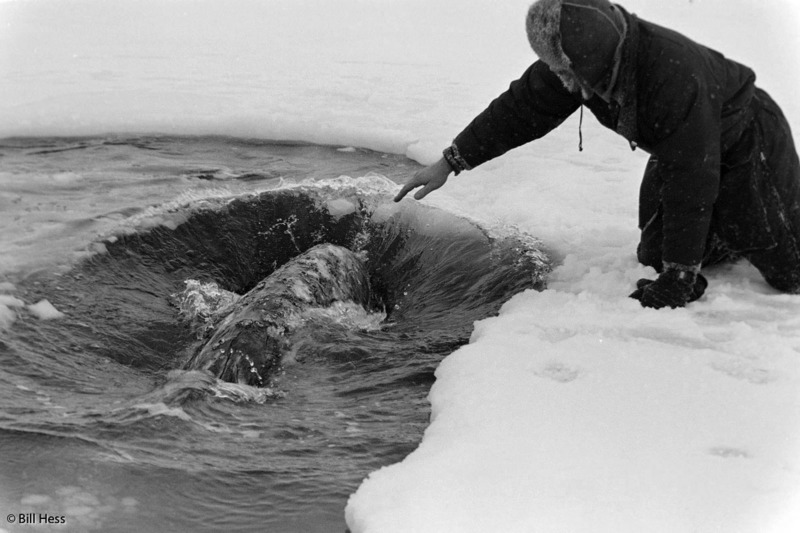
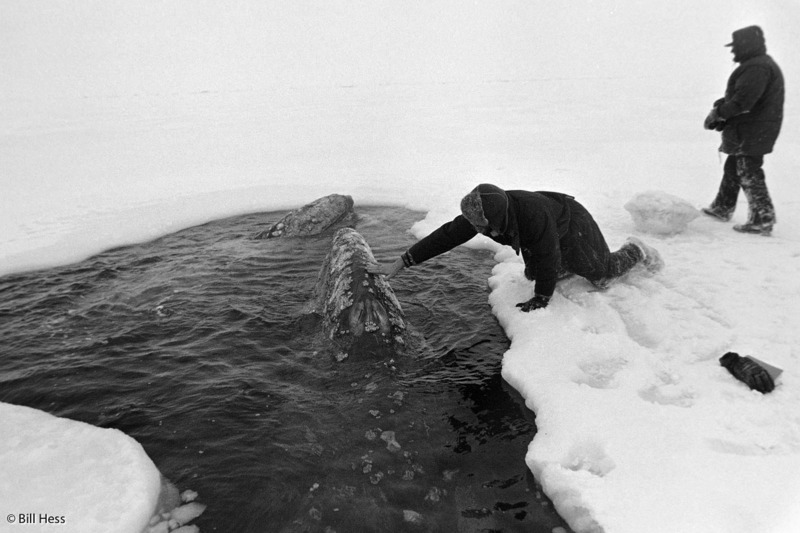
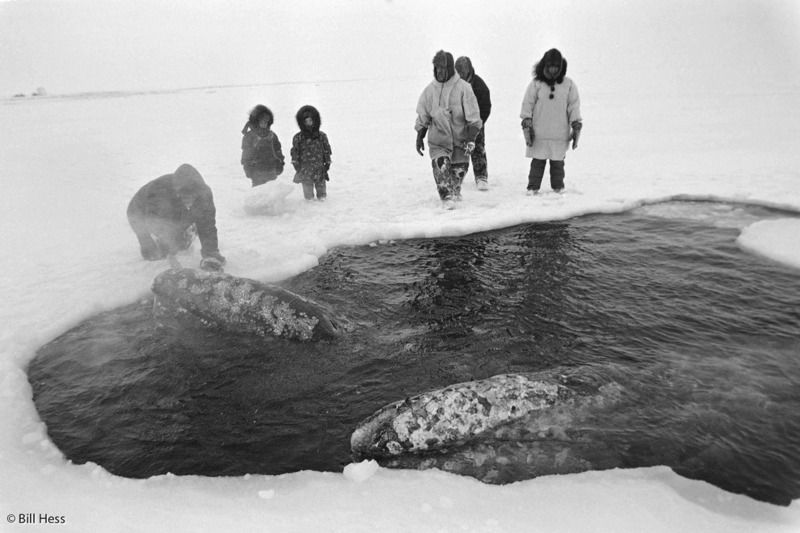

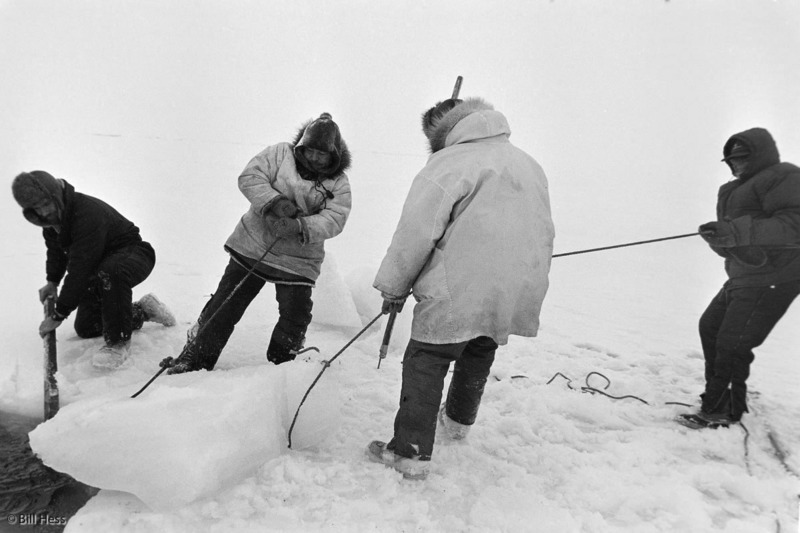
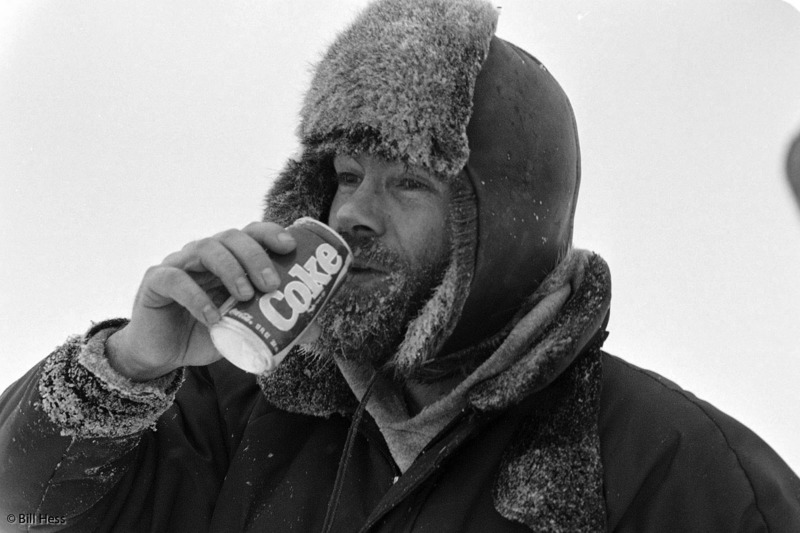
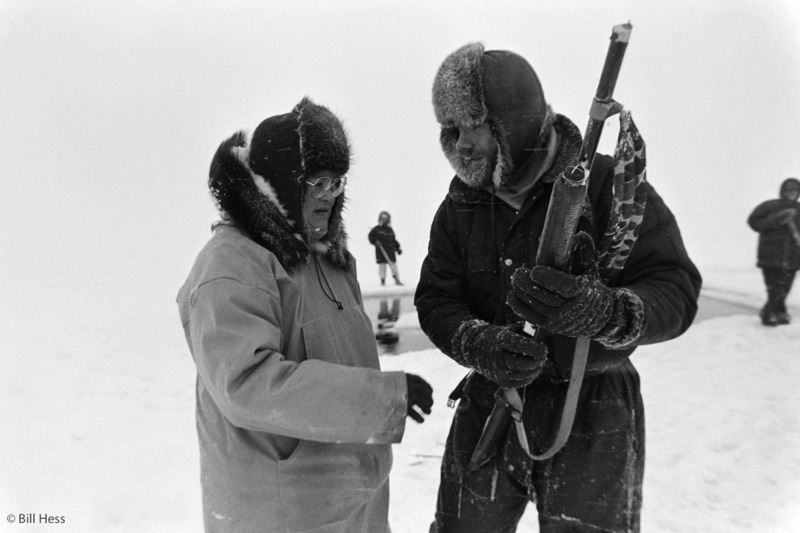
Reader Comments (2)
The little boy looks like it may be a young Eben or Benny. Not sure though.
Sharene, I almost sent this photo to you because I thought it might be Eben, but I wasn't sure. Jo Jo should know